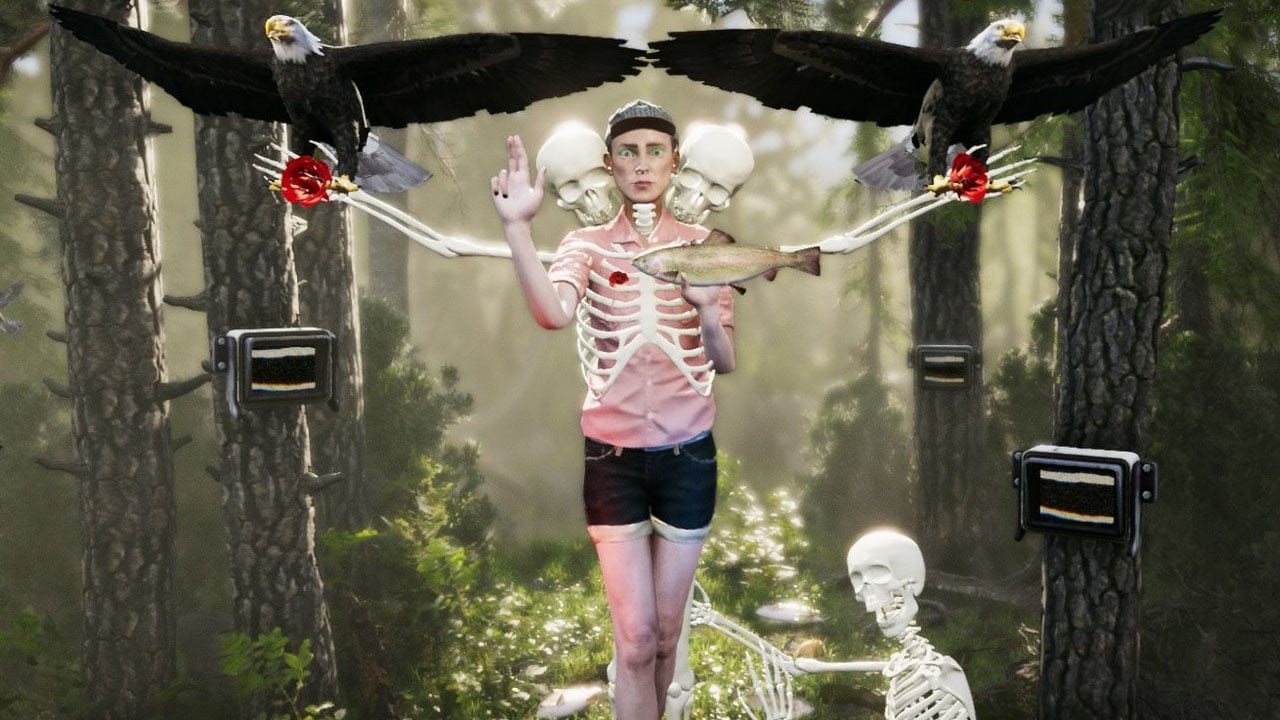“Inspired by a true story“. These are words you’ve likely seen displayed before countless films and maybe even a few games. While that iconic notice doesn’t appear before ‘The Forest Cathedral’, it probably should have. It couldn’t be more apt. The second game from developer Brian Wilson (Where the Bees Make Honey) and published by Whitethorn Games (Lake, Wytchwood), this title is an accomplished and thought provoking retelling of the scientific process behind one of the worlds most important environmental publications.
In The Forest Cathedral, you play as Rachel Carson. For some of you, that name may have already rang a bell. In case it hasn’t, here’s a quick primer: Rachel Carson is the author of the environmental science book ‘Silent Spring’. Published in 1962, the book is considered by many to be among the most important and influential scientific publications of all time. In it, Carson outlines the damage that the insecticide DDT causes to the environment, ecological webs, and the potential harm to humanity. The book changed public perception on the use of DDT and Carson’s combined work eventually sparked the creation of the US’s EPA.
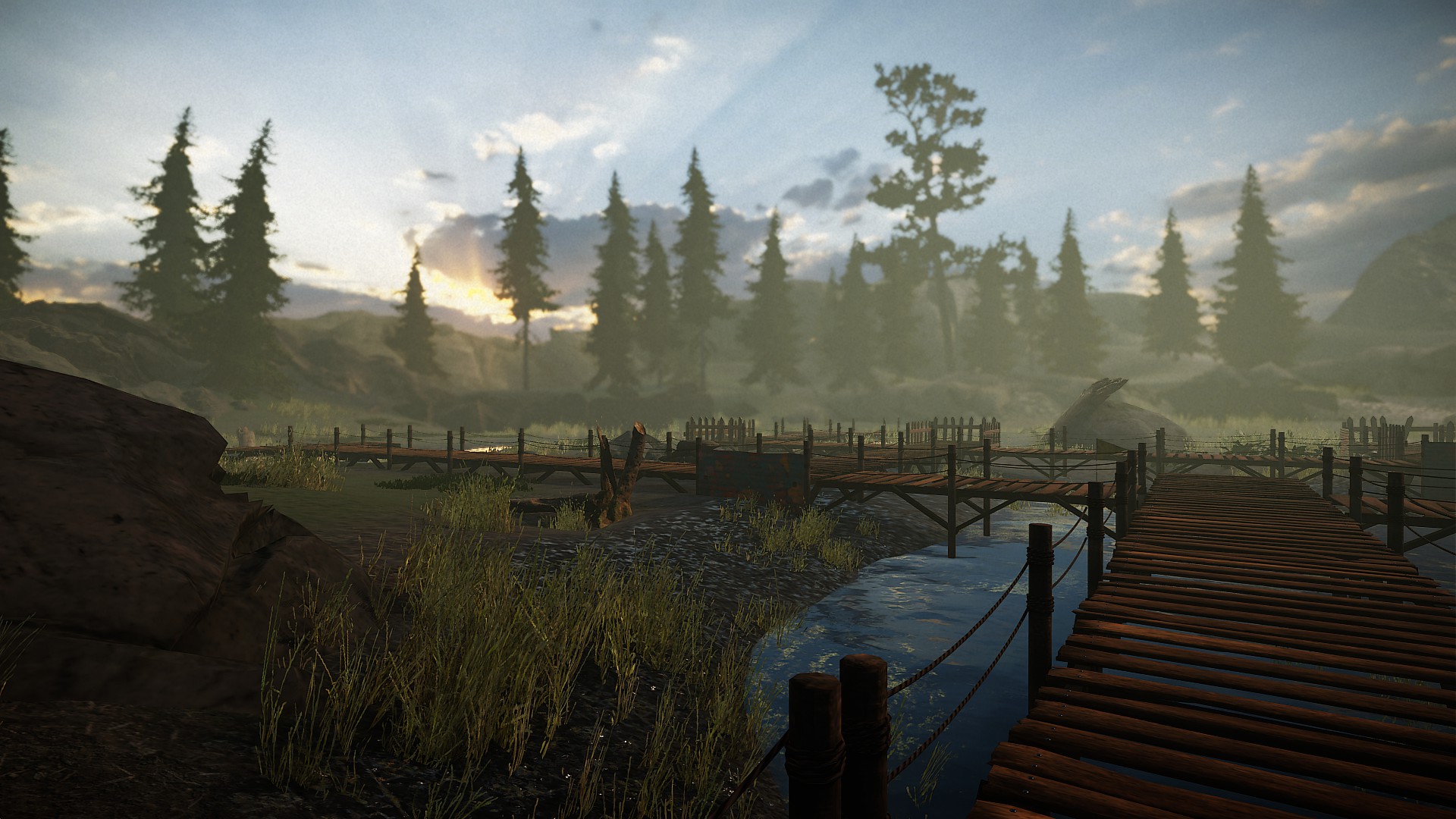
Something Fishy Is Going On
While Carson’s real world research took more than 4 years to come to fruition, The Forest Cathedral dramatizes this in a very different way. In the game, Rachel is tasked by Dr Muller (the man that invented DDT) to spend a few months isolated on an island that had recently been sprayed by DDT. Her job there will be to monitor the wildlife using a sci-fi device called the iRGB. As you might imagine, she starts to uncover the effect of DDT first hand in the insects, fish and birds.
The Forest Cathedral portrays this story by blending 3D first person exploration/narrative game play with sections of 2D platforming. In the first person sections, you explore the island and go about your daily chores through Rachel’s eyes. Occasionally though, she’ll have to use some machinery which can’t be controlled like a normal terminal or tool. This is where the 2D platforming comes in.
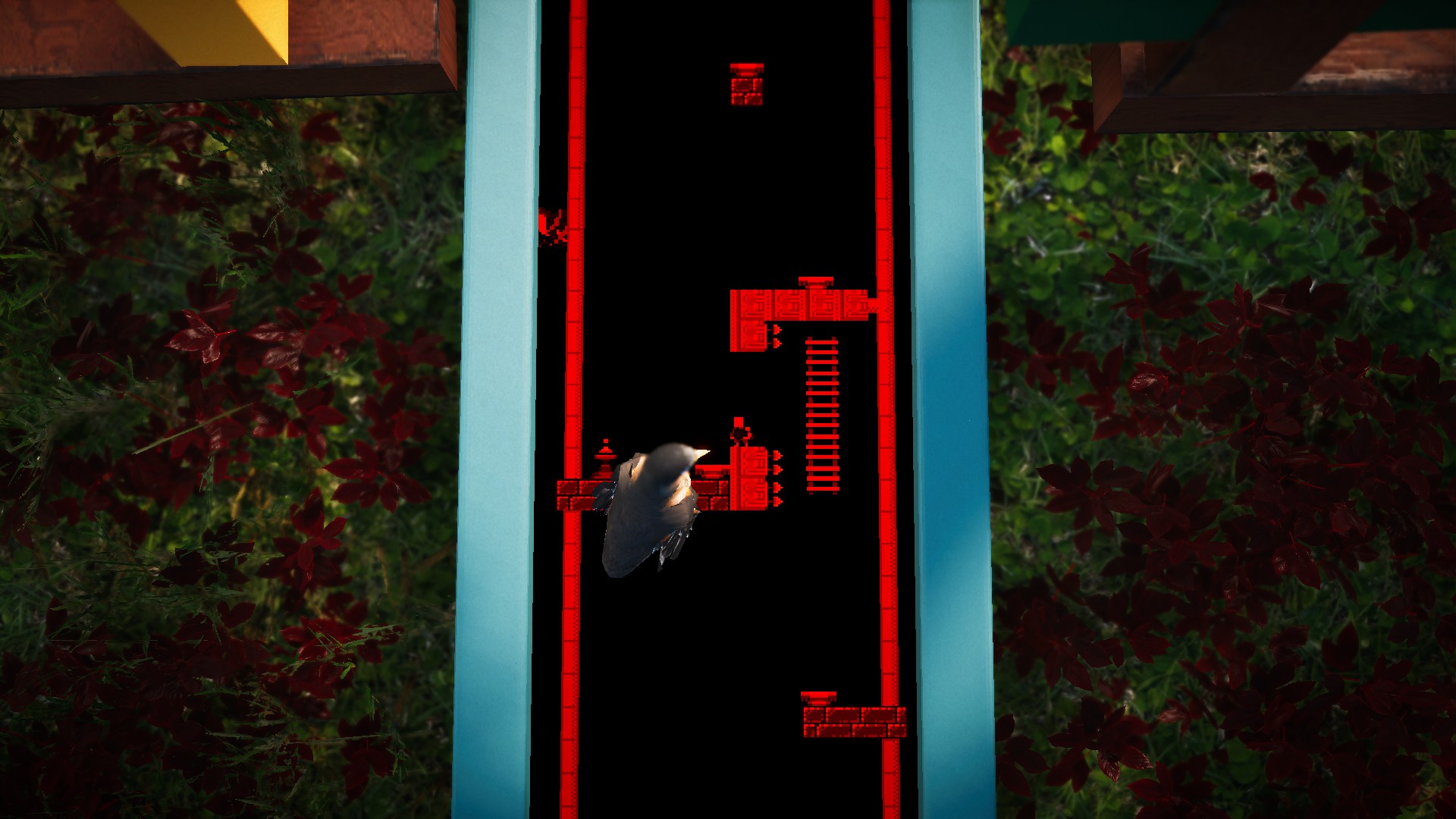
When interacting with TV-like terminals, Rachel hands over control to her only companion on the island – A tiny pixelated person that lives within computers referred to as ‘Little Man’. The view point of the game focuses on the TV screen and the platforming begins. The aim of these 2D sections is always to move boxes into corresponding box-shaped-voids. In order to do that, you’ll have to use Little Man’s move set – jumping, dashing, climbing up ledges, wall jumping, bouncing and attacking – to overcome a variety of platform staple hazards. Spike pits, game-themed enemies and crush zones stand between the Little man and his aim. Once the box has been placed where it needs to go, something will activate within the real world. This can be like machinery gaining power or a gate opening.
Most of the story within The Forest Cathedral is delivered via dialogue. Whether it’s Rachel talking to herself (she gets a little quirky having spent so much time on her own), or with other characters on a radio, many of the story beats are revealed during conversations. These chats are often presented via a visual-novel-esque system. Pixel art versions of characters are presented next to each other as they talk.
Welcome To Science Park
Despite offering a small degree of freedom, The Forest Cathedral is quite a linear experience. When walking around in the first person perspective, you have the opportunity to explore the admittedly lovely looking environments, but the area is small and progress is staged and gated. Using the iRGB device and following luminous piping, the game makes it very clear where you’re supposed to be headed next. Even if you get off track, smart environmental design (coupled with the occasional invisible wall) will keep you progressing.
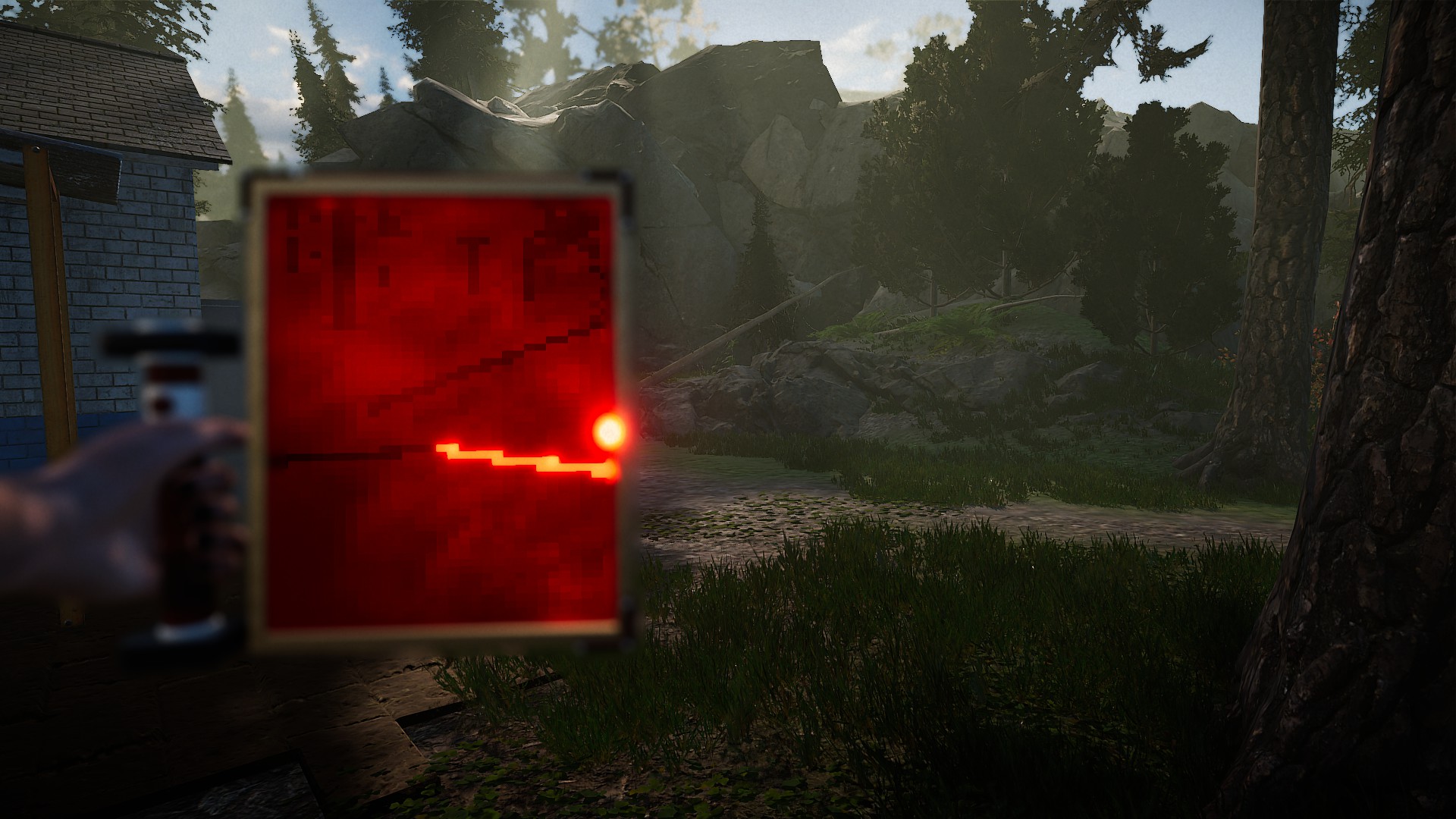
The same can be said about the platforming sections. Little Man’s path through the platforming is straightforward with the occasional branching path leading to two objectives. You’ll have to reach both objectives, which means a little backtracking, but the game opens shortcuts to reduce any repetition. The platforming itself isn’t particularly challenging and lacks any innovation, but it does work to break down the simple walking and exploring.
The Forest Cathedral spotlights its story over interactivity. Through smart editing, quick cuts, an economic script and some reasonable voice acting, the tale is delivered succinctly and with a steady pace during its 2-3 hour length. Where the game succeeds is by creating an air of peculiarity and contrast. Pairing sci-fi-like devices with the surrounding nature, by offering glimpses of things that are out of place or by foreshadowing the dialogue with visual clues, the game layers a story beneath the story. If you’re familiar with Silent Spring and Rachel Carson’s work, some of the narrative may feel a little on the nose but it works well as an abridged, simplified and dramatized version of events.
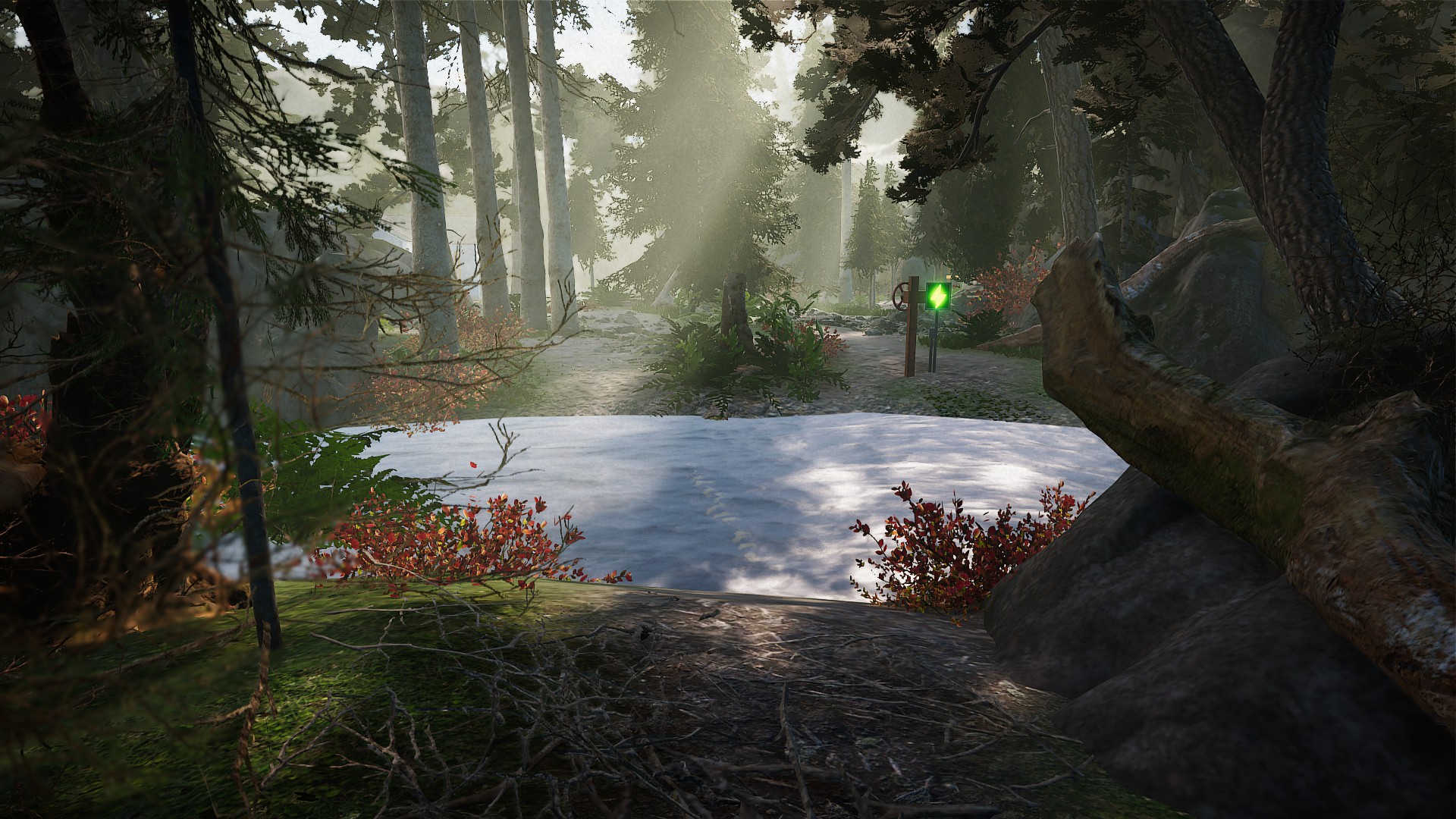
Some pesticide required
Unfortunately, The Forest Cathedral isn’t without its bugs. Perhaps aptly so. There’s only a handful of them dotted around and all but one of them are visual, rather than offering any kind of impact. For example, it one particular trench of forest, there’s a random floating piece of bark that looks like it should be attached to a tree. In another instance, the camera got weirdly hung up for a few second on some of the environment. Like I mentioned, they’re all forgivable foibles in an otherwise great looking games.
One particular bug is a little more frustrating. During the most intense moment of platforming with Little Man, one of the walls becomes sticky. Touch it and you get almost magnetised to it as you bounce on a spring surrounded by a spike pit. I initially thought my controller had broken. After plugging in two other pads and failing at this section repeatedly, I scratched this up to bug. After changing the way I played this section entirely, essentially fluking it, I managed to clear it.
A few mild frustrations don’t detract from the core message of The Forest Cathedral however. It’s incredibly rare to see a game take its inspiration from a scientist and their publications, outside of the semi-fictional versions of Tesla and the like. This source material, and the way it portrays incredibly important and often understated research, gives The Forest Cathedral the feel being a true gaming curio. If you have a few hours to spare, and you want to immerse yourself in something a little bit different, this will certainly fit the bill.
It ironically has a few bugs, but The Forest Cathedral’s dramatized portrayal of Rachel Carson’s research into pesticides is still one worth your time. Short and succinct, the game blends narrative focused exploration with 2D platforming into a seamless experience. While none of its component elements are particularly earth shattering, the way they are combined makes this game more than the sum of its parts.

Delete After Reading is available now on PC (review platform) and iOS.
Developer: Brian Wilson
Publisher: Whitethorn Games
Disclaimer: In order to complete this review, we were provided with a promotional code from the publisher. For our full review policy, please go here.
If you enjoyed this article or any more of our content, please consider our Patreon.
Make sure to follow Finger Guns on our social channels. Twitter, Facebook, Twitch, Spotify or Apple Podcasts – to keep up to date on our news, reviews and features.
